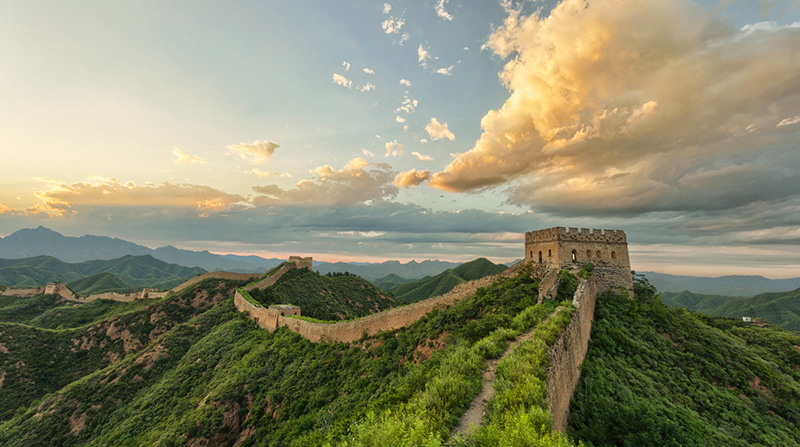

The Great Wall of China, Photo Credit: hudifeng-iStock
It’s easy to get lost among the myriad historical and cultural sights of Beijing, China’s capital city. Whether you’re hiking along the Great Wall of China, gazing in awe at the sheer expanse of the Forbidden City or getting delightfully lost in the city’s hutongs, you won’t miss a thing with our guide to the top attractions.
Hike the Great Wall of China
What Beijing to-do list would be complete without including the Great Wall? There are several sections of the ancient landmark that are open to visitors. The closest to Beijing, and the most visited, is Badaling, but a better and less-crowded option not much further out is Mutianyu.
Those who want the Great Wall mostly to themselves can climb the Jinshanling, Simatai and Gubeikou sections, which are beautifully wild and rambling.
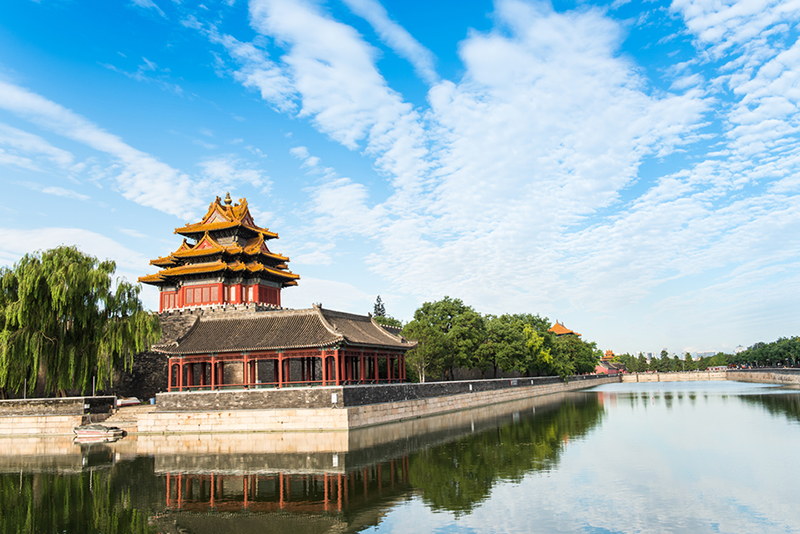
Watchtower of the Forbidden City, Photo Credit: zevei-wenhui-iStock
Explore the Forbidden City
The former home of 24 Ming- and Qing-dynasty emperors, their families and coterie of staff was off limits to civilians for hundreds of years, hence its name. This UNESCO World Heritage Site is enormous, with nearly 9,000 rooms spread out over 180 acres.
The Forbidden City is an outdoor gallery, but within it is the Palace Museum, whose collection of nearly 2 million antiquities includes paintings, bronze, porcelain and enamel pieces, and royal seals (used by its former residents).
When crowded, the Forbidden City can feel like a zoo, so it’s best to go early in the morning.
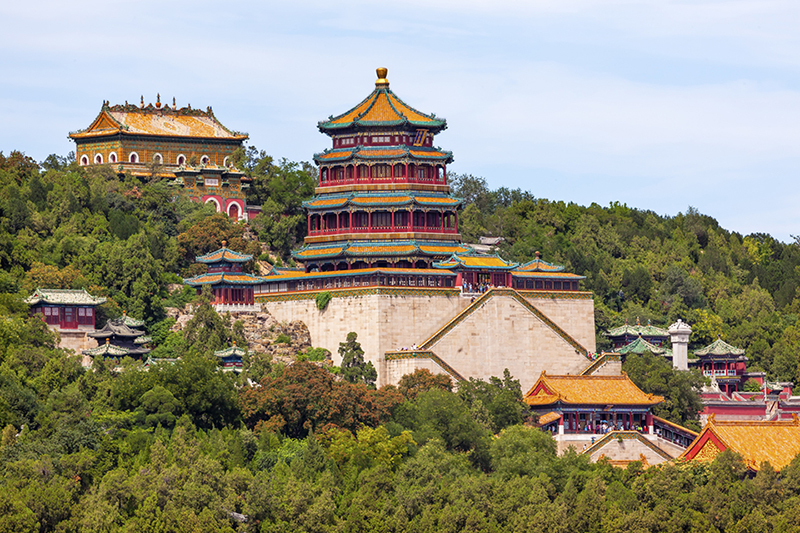
Summer Palace, Photo Credit: bpperry-iStock
Experience the Summer Palace
A visit to this beautiful complex in northwestern Beijing is a breath of fresh air. It’s the largest imperial garden in China and among the world’s best preserved. Climbing Longevity Hill or walking along the nearly 2,300-foot Long Corridor, beautifully carved and painted with scenes from Chinese mythology, is to be transported out of the crowded capital city.
Dine in a 600-year-old temple
This 600-year-old structure has gone from a house of worship to a factory making Beijing’s first televisions to its present incarnation, Temple Restaurant Beijing, one of the city’s top dining destinations.
In a bright, minimalist space, contemporary European fare is served, like rice-flake-crusted lobster with bok choy, coconut curry and a chili garlic oil.
Lunch and brunch feature prix fixe selections; dinner is à la carte, though wine-pairing tasting menus (including a toothsome vegetarian option) are available. The service and food are excellent.
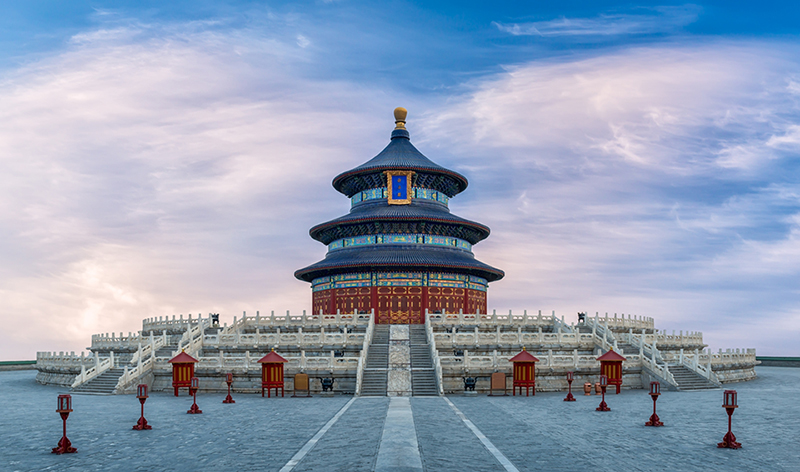
Temple of Heaven, Photo Credit: HK-iStock
Visit the Temple of Heaven
Come here early in the morning and you’ll be treated not only to a fairly empty temple, but to a lovely picture of old-school Beijing. In the surrounding park, you’ll see locals flying kites, playing checkers or mahjong, and chatting idly with their friends.
The Temple of Heaven’s central structure is the circular Hall of Prayer for Good Harvests, and its interior is painted in deep red, gold, blue and green.
Snap up souvenirs at an antique market
Weekends are when southeastern Beijing’s Panjiayuan Antique Market really comes alive. Up to 3,000 vendors pour in each Saturday and Sunday, selling all manner of curios. Easily portable souvenirs include vintage photographs, jewelry and palm-sized figurines.
If you’ve got more space (or are willing to ship back your find), go for terracotta warriors, handsome, Qing-dynasty-style carved wooden furniture and blue-and-white porcelain vases.
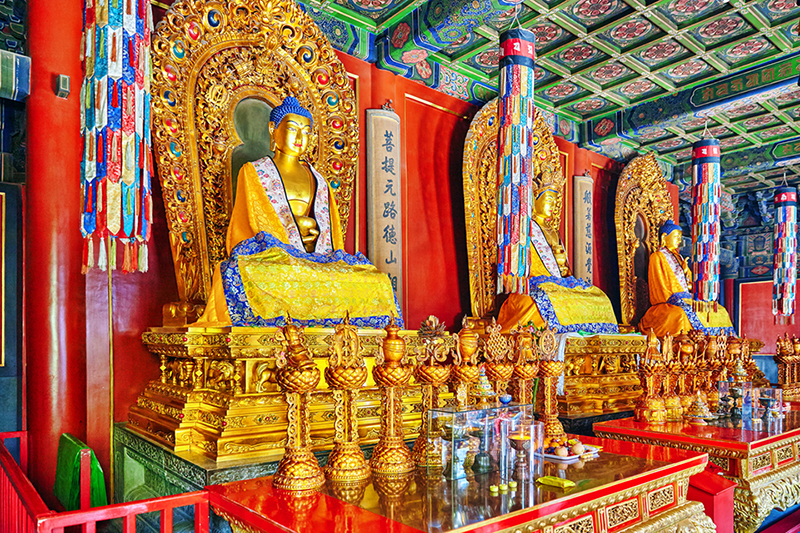
Lama Temple, Photo Credit: Vitaly Edush-iStock
Burn incense at Lama Temple
A few blocks from the hutongs, this Buddhist temple dating to the 1690s was a royal residence before becoming the home of monks from Tibet and Mongolia. In 1949, with the founding of the People’s Republic of China, the site was closed and would remain so until 1981.
Today, it’s a functioning temple, so you’re as likely to see monks as you are other tourists walking through the five halls and burning incense in prayer.
Visit the Temple of Confucius
Less than a five-minute walk from Lama Temple is China’s second-largest Confucius temple, bested only by the one in the philosopher’s hometown. This religious structure dates back to 1300 and was in active use all the way up to 1911, when imperial rule ended with the succession of the Qing Dynasty by the Republic of China.
Walking through the four courtyards, lined in trees that are hundreds of years old, you’re humbled to think of the many who have prayed here for more than six centuries.
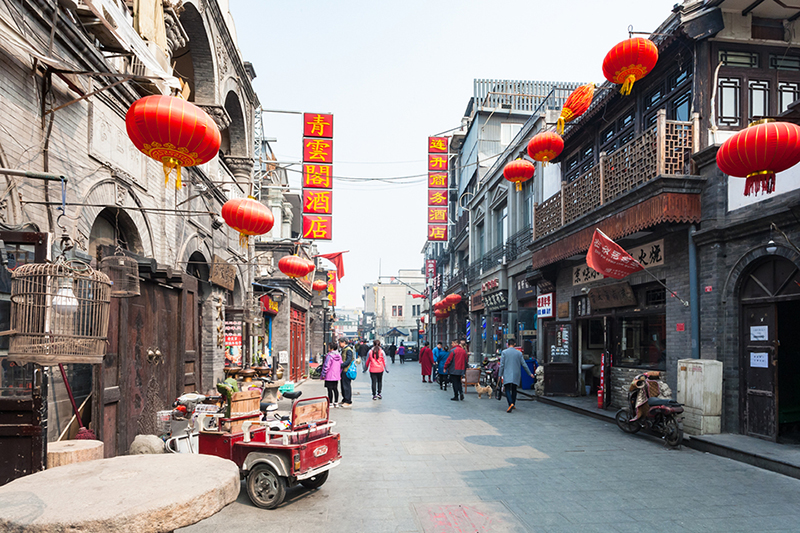
A Beijing Hutong, Photo Credit: Vvoe Vale-iStock
Get lost in the hutongs
Beijing’s hutongs are narrow alleyways lined in traditional courtyard houses. Where there were once several thousand, now it’s estimated that only a few hundred remain — the victims of modern development.
The hutongs that still stand are wonderfully atmospheric; many of the courtyard houses are inhabited and several have been transformed into the capital’s hippest restaurants, cafés, bars and shops.
Sip cocktails made from baijiu (an ultra-strong grain liquor) at Capital Spirits and eat vegetarian Chinese food fit for royalty at King’s Joy while enjoying the relative peace and quiet of these maze-like laneways.
View contemporary Chinese art
Take a taxi to art hubs 798 and Caochangdi, where galleries showcasing works by contemporary Chinese artists sit alongside trendy restaurants and boutiques. 798 was built in the image of 1950s Bauhaus-style factories that artists began being using in the mid-1990s.
Today, they’re home to contemporary art powerhouses like UCCA (The Ullens Center for Contemporary Art) and Pace Gallery.
In Caochangdi are more galleries and art spaces, including the studio of Ai Weiwei, Three Shadows Photography Art Centre and Pekin Fine Arts.
